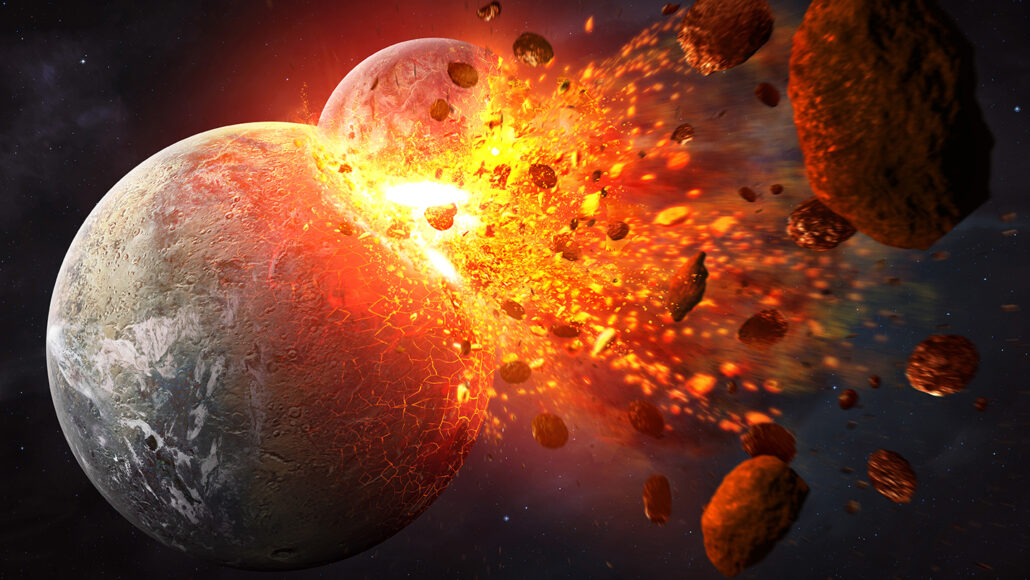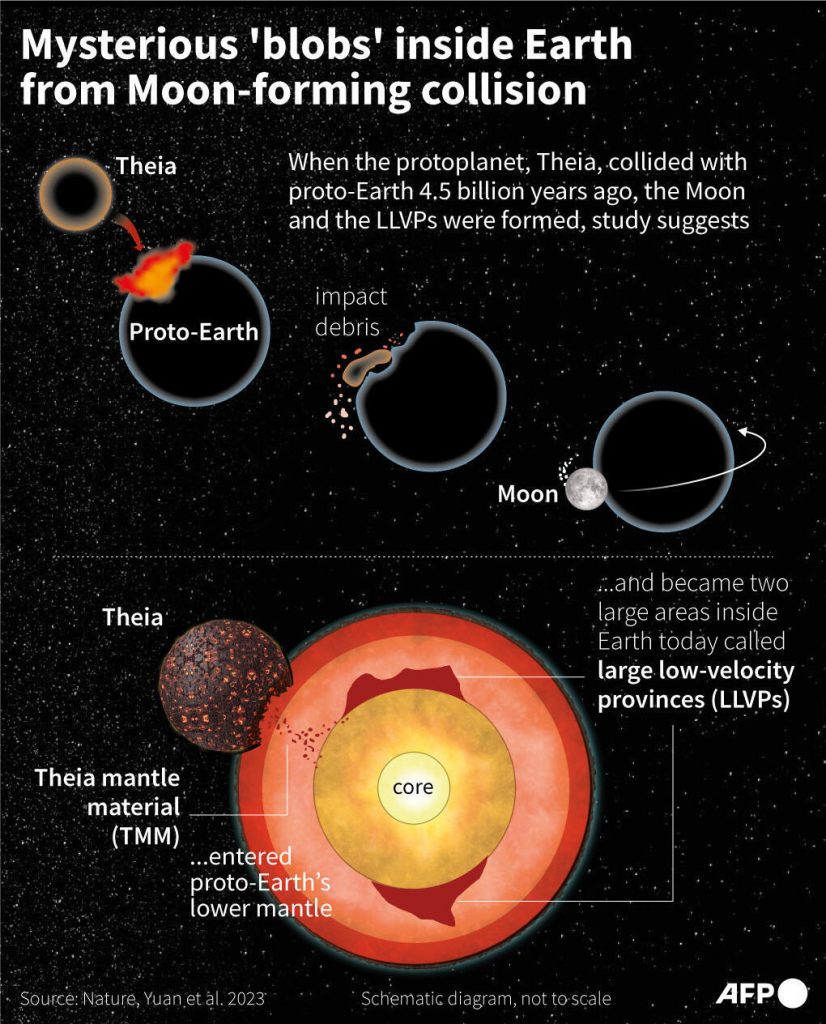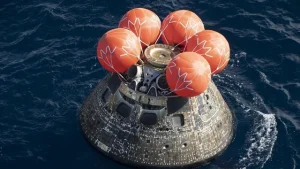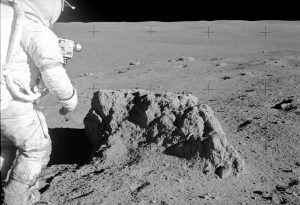Tracing Theia: Scientists Found Remains of “Buried Planet” Inside Earth
8th May 2024
Recent research into the composition of metal ore deep within the moon provides new evidence supporting the theory that the moon was created from the debris of a colossal collision between Earth and an ancient planet billions of years ago.
This collision, hypothesized to have occurred 4.5 billion years ago, involved a certain planet approximately the size of Mars, known as Theia, which shattered into molten rock fragments upon crashing into Earth.
Although remnants of Theia are thought to be embedded deep below the surface in dense, large masses or “blobs” beneath Africa and the Pacific Ocean’s tectonic plates, any evidence of where the rest of Theia’s material went has been a mystery until now.
However, recently, fresh data derived from NASA’s GRAIL (Gravity Recovery and Interior Laboratory) spacecraft has discovered titanium-iron ore deposits deep within the lunar crust. This new study indicates that the remnants of Theia indeed contributed to the formation of the Earth’s moon.
The Evidence of Theia’s Impact on the Moon’s Mantle
Within the mantle of the moon, i.e., the area lying between its crust and core, the GRAIL spacecraft has identified two dense areas. Such regions are rich in iron “ilmenite” and titanium deposits, aligning with predictions made by the Theia impact hypothesis.

Following the presumed collision between Theia and Earth, remnants of this ancient planet likely settled beneath the Earth’s surface. Concurrently, on the moon, heavy titanium and iron originating from the impact began to sink toward the lunar core, thus displacing lighter materials upward.
On Earth, two similarly dense areas at the bottom of the mantle, referred to as LLVPs (Large low-velocity provinces), have further supported the hypothesis that the moon was formed as a result of a colossal collision involving Theia.
As mentioned, these LLVPs are situated beneath the African and Pacific tectonic plates. They were identified using seismic detection technology similar to that employed in earthquake analysis.
Geologists confirmed their presence after observing that seismic waves significantly slow down at a depth of 1,800 miles within these two specific areas, a phenomenon not observed in other regions of the Earth.
Tracing the Theia Connection
Researchers suggest that the substances between these LLVPs possess a 2 to 3.5% higher density than the rest of the Earth’s mantle.
In the previous year, a team from the California Institute of Technology proposed that the origin of these LLVPs might be linked to a minor quantity of material from Theia that became incorporated into the lower mantle of the early Earth.







Thank you for your comment! It will be visible on the site after moderation.